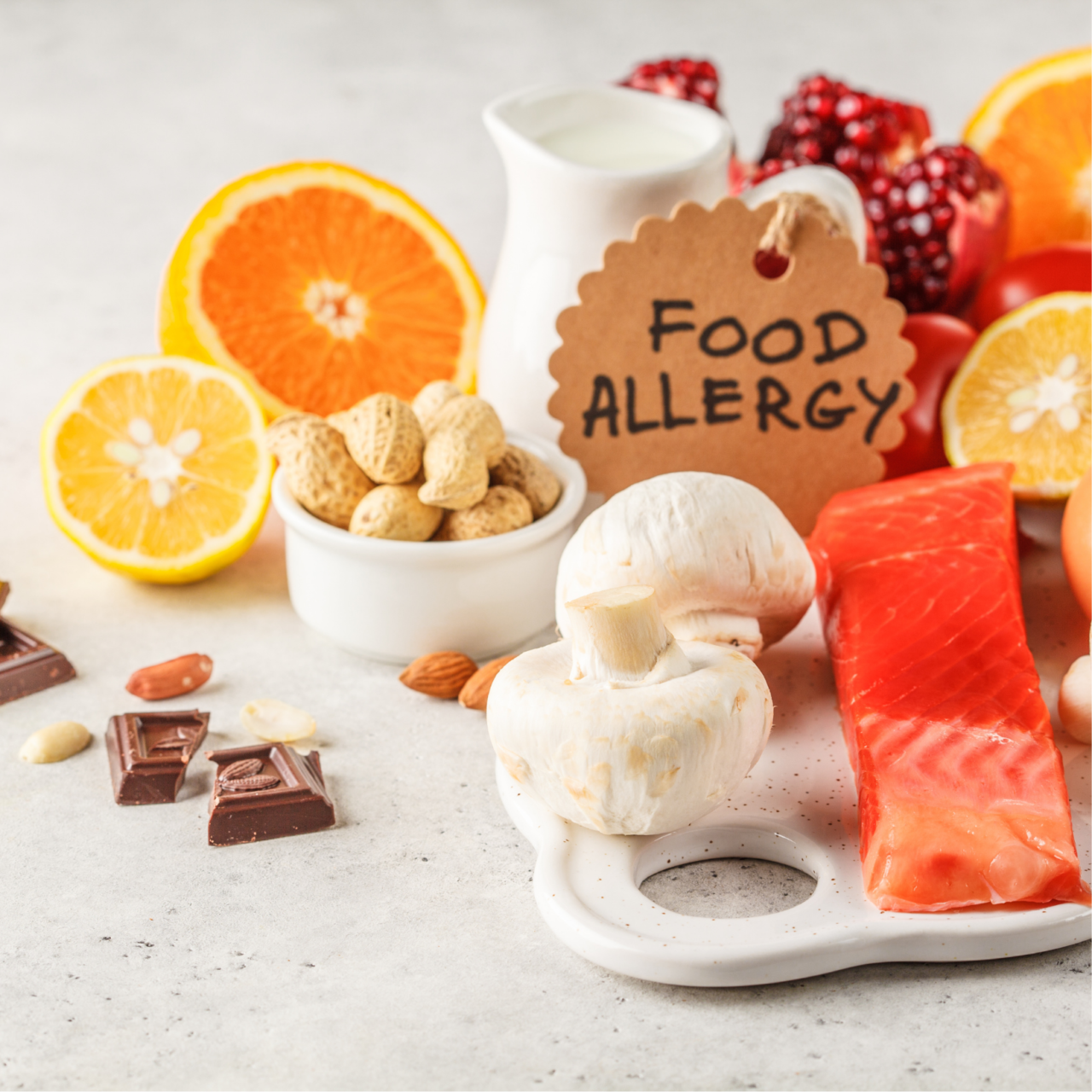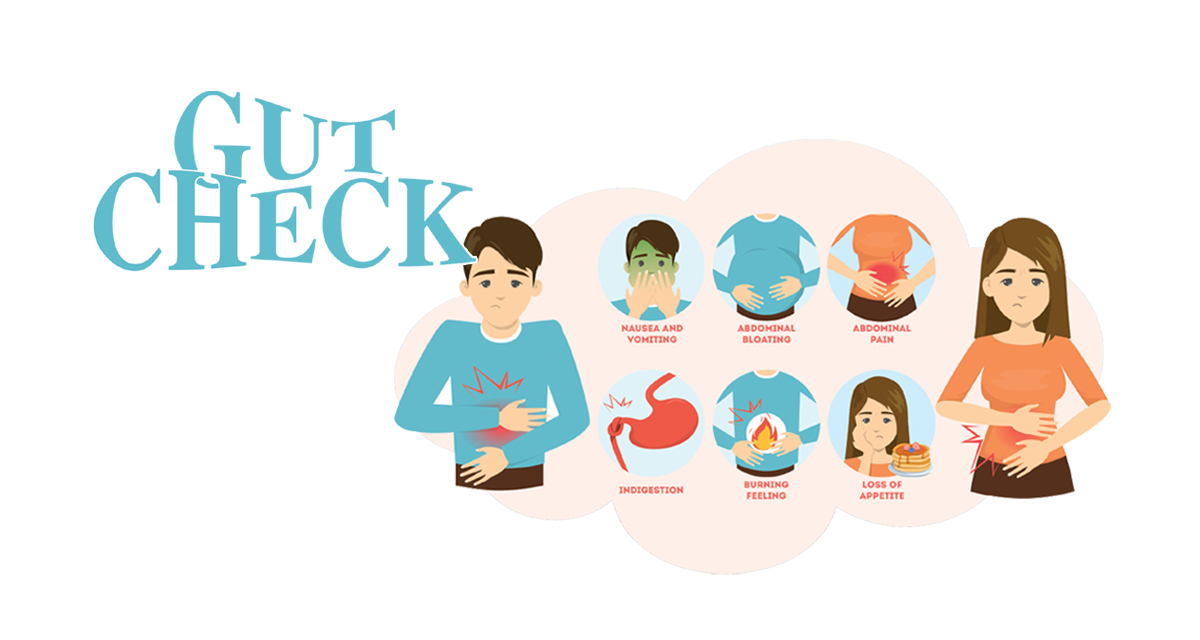By Katie-Leigh Corder and Dan England
If there was any question that there’s more information than ever about how food affects our gut, consider gluten.
Would you, for instance, even know what gluten was if we didn’t now recognize it as a leading gut irritant? Gluten sounds like something you take for your joints, or something you used during craft time at preschool, or perhaps a breed of shark. Instead, as you probably know by now, it is a substance found in grains, especially wheat, that gives dough its elastic texture. It’s not a sugar or a spice, but you’ll definitely know the difference between a gluten-free cookie and, say, a delicious one.
There are reasons for hipsters (and others) knowing so much about gluten. Food Allergy Research and Education, a private group that funds food research, estimated that in 2018, 32 million Americans had food allergies, including 5.6 million children under age 18.
Allergies can be controlled, if not eliminated, but many can also be serious. Gluten became a buzzword after Celiac disease became more commonly diagnosed. Those with the disease can’t eat gluten, as the ingredient causes a reaction in the small intestine, leading to nasty medical conditions that don’t need to be listed (you probably know or can guess anyway). There are many other food allergies as well, also with equally bad side effects, including death.
But there are vast differences between having a sensitivity to foods versus a food allergy or an intolerance, and it can be tricky to find what foods bother you.
Are you sensitive or outright intolerant?
Food can be a lot like social media. You can be sensitive to it or just simply intolerant. Intolerance comes from allergies. Sensitivity causes irritation. Let’s look at both.
A food allergy is when the body’s immune system reacts by attacking ingested proteins from specific foods, seeing them as a threat. The person could experience anaphylaxis, a life-threatening reaction where the airways swell, as well as other symptoms including hives, itching, sneezing, coughing, nausea and vomiting. The most common allergens include nuts, soy, seafood/shellfish, wheat, gluten, citrus, milk, eggs and sesame.
Food allergies can come and go with age in both children and adults. “Allergies are caused by a molecule called IgE, which can react to the presence of trees, grasses, cats, dogs, bees, hornets and foods,” says William A. Lanting, M.D., of the Allergy & Asthma Center of the Rockies in Fort Collins. “If you have an IgE against a food, it means that your body thinks it’s a bad molecule and wants to protect you against it. The IgE sees it and goes after it and releases histamine, which is what causes the allergic reactions (nausea, vomiting, diarrhea, etc.).”
A food intolerance is where a person’s digestive system lacks certain enzymes, making it difficult to digest certain types of foods, which can result in abdomen pain, GI tract issues (diarrhea, heartburn, indigestion, nausea, etc.), fatigue and irritability. The most common food intolerances include lactose from dairy products; foods containing histamine such as alcohol, avocados, spinach, processed meats and shellfish; and caffeine and fructose.
“Sometimes due to intestinal permeability (or ‘leaky gut’), pathogenic bacteria or undigested food proteins can find their way into our bloodstream,” says Cara Marrs, a registered dietitian nutritionist at UCHealth Yampa Valley Medical Center in Steamboat Springs. “This can cause a host of system
“This can cause a host of systemic reactions, with food sensitivities being one, and these reactions may cause migraines, joint inflammation, skin conditions, gastrointestinal issues and more.”
Wait. Leaky gut?
Yep. Small openings in the intestinal wall regulate what can pass between the lining, allowing water and nutrients to enter the bloodstream while blocking harmful substances. However, when those openings are damaged or become loose, leaky gut occurs, and toxins can enter the bloodstream. When this happens, a person can experience several symptoms that can occur immediately or up to two to three days after eating a particular food.
Leaky gut can also be caused by stress, genetics, inflammation, excessive sugar intake, eating the same type of food for a long period of time, consuming alcohol and prescription and illicit drugs.
How food sensitivities surface
Naturopathic doctor Joan D. Waters of Practical Health Solutions in Fort Collins sticks by her motto, “Identify and treat the cause,” when it comes to understanding and reversing food sensitivities.
“It all starts with inflammation, which causes the gut to leak more, and inflammation can be caused by many things,” Waters says. “To treat food sensitivities, you need to identify what’s causing the inflammation.”
Common side effects of food sensitivities can range from headaches, bloating, rashes/skin changes, insomnia, fatigue, joint pain, stomach pain/cramps, diarrhea, constipation, acid reflux, nausea, vomiting, oral sensations and others. The types of side effects and their level of severity depend on the person and the cause of their inflamed gut.
Identifying food sensitivities

Food sensitivities may be reversible after determining and treating the cause of an inflamed gut. First and foremost, visit your healthcare provider or dietician to discuss the issues you are having and rule out if it is a food allergy, since those can be life-threatening.
The internet can be misleading, doctors say. Often, an individual can conduct a search on Google and diagnose themselves with anything. There are also mail-in tests for food sensitivities that cost hundreds for a lab to identify and outline food sensitivities. Many medical professionals see these tests as overhyped, inaccurate and unreliable. Lanting calls them “bogus.”
“In the U.S., people waste $250 purchasing IgE tests and sending them to labs and coming back with 20 to 30 foods that they claim they’re sensitive to, and they’re bogus tests,” he says. “I don’t know why the Food and Drug Administration hasn’t removed them from the market.”
Notify your healthcare professional before changing anything in your routine to attempt to discover potential food sensitivities. It is likely you’ll be advised to do a test in the clinic or try a specific diet.
“Find a registered dietician who works with food sensitivities and talk about what the best test is for you as well as with your physician. Some of the tests out there only look at IgE reactions, where you may see many false positives,” says Marrs. “There are some good food sensitivity tests out there, typically ones that are ordered by a provider.”
Elimination Diets
Another common tool doctors use to help determine what’s causing problems is an elimination diet. That involves cutting certain foods out of your diet to try to decrease inflammation in your gut, which enables you to identify which foods you are having a reaction to.
“After you treat the cause, the patient must avoid the offending foods for four months. This allows your body’s immune system time to starve itself from seeing those foods; if it doesn’t see those foods, then it doesn’t make new antibodies to them,” she says. However, “if you just avoid your food sensitivities and don’t treat the cause of your inflammation, then, over time, you will trade one set of food sensitivities for another set.”
Professionals caution against doing an elimination diet on your own to ensure you’re still getting the right amount of needed nutrients in your body.
“It’s very important to have the support of your healthcare provider,” Marrs says. “Seek their guidance if you’re planning to start an elimination diet as there are a lot of intricacies regarding your health history, stress level, medications you’re on, supplementation, exercise history, macronutrient and micronutrient needs and more.”
If you are working with a healthcare professional and are dedicated to solving the cause of your leaky gut through the use of testing or elimination diets, you can eventually reverse a food sensitivity in most cases. It depends on what’s causing the inflammation of your gut.
“To get out of the cycle, we need to heal the gut, and then avoid those foods so that the antibodies to them die off,” Waters says. “It takes several months and a lot of diligence, but you can get your life back.”
How to Eliminate
- Waters advises patients to implement the following routine when on an elimination diet, while still including a healthy level of nutrients.
- Eliminate all of the most common food sensitivities for 30 days, such as gluten, dairy, eggs, citrus, tree nuts, corn, soy, nightshades, wheat, pork and seafood.
- After 30 days, reintroduce foods one at a time, four days apart, while paying attention to how you feel. You will have a more pronounced reaction when you reintroduce them.
- Avoid those foods that cause an adverse reaction for four months.
- Then, find a qualified practitioner to identify the cause of your gut inflammation and treat the cause.








